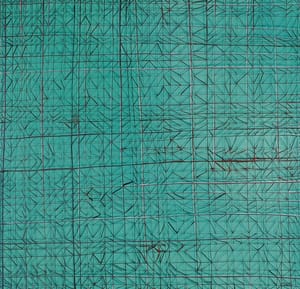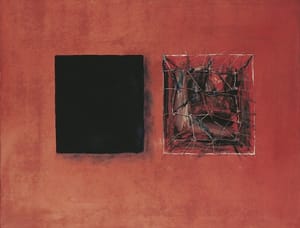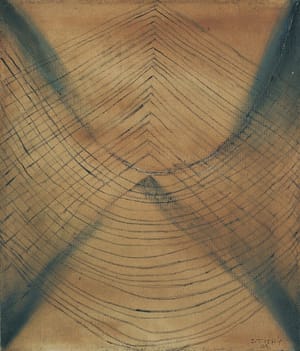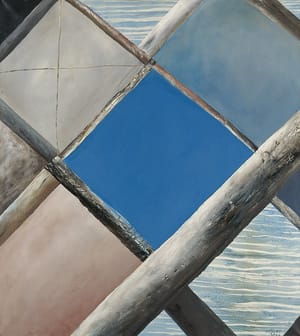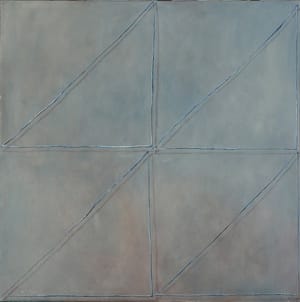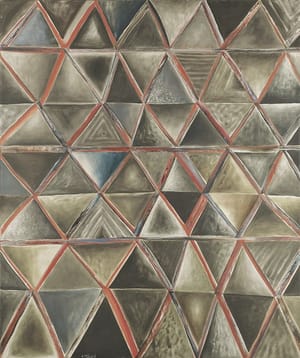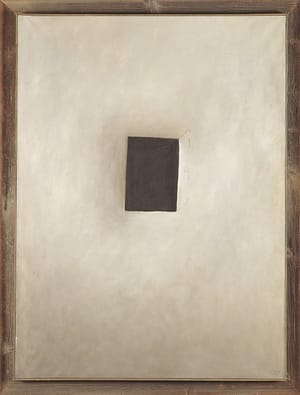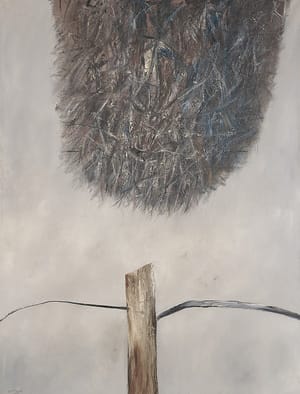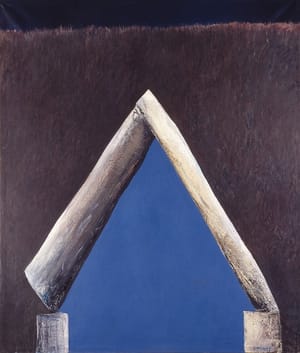- First Name
- Oldřich
- Surname
- Tichý
- Born
- 1959
- Birth place
- Zlín
- Place of work
- Dojetřice
- Website
- https://www.oldrichtichy.cz/
- Keywords
- CSU Library
- ↳ Find in the catalogue
About artist
In the generation we associate with the advent of postmodernism Oldřich Tichý was to begin with one of the less conspicuous members. He took part in two of the last exhibitions known under the collective title of Confrontations, and was a member of the not terribly well known group Most, the creation of which was linked to the tendency at that time for group performances kick-started by the Tvrdohlaví group. In 1988 he had his first solo exhibition in what at that time was an important venue of the unofficial culture, the Blatiny Cultural Centre in Prague. In 1987 he had taken his young family to the countryside, to the small village of Dojetřice in the sparsely populated region of Posázaví, to a farm that belonged to his wife’s family, a move prompted by both his own character and his roots in Moravian Wallachia.
Leaving the centre proved to be a crucial moment for the crystallisation of his creative style, which was inextricably linked to the rural environment. The basic building block of his style was the abstract, imaginatively experienced object depicted in its rustic materiality on an indefinite flat backdrop. Tichý seeks inspiration from the environment in which he lives. We find motifs such as the blackened wood of barns, a tangle of branches and rusty wire mesh. Corresponding to this are subdued colours in brown, silver-gray and gray-blue tones, sometimes combined with clear azure blue skies, as in the case of an early work that announced his intentions clearly Žiju sám ve zdejších lesích / I Live Alone in the Local Woods (1988).
His focused work in self-imposed exile was also made possible by the fact that he was one of the few Czech artists to find himself taken up soon after 1989 by a foreign gallery, the Galerie Dijkstra in Antwerp. These two features, namely his decision to adopt the role of loner living outside the centre, and the guarantee he had of selling his work abroad, meant that for many years Tichý appeared only sporadically in Czech galleries. Along with an element of exclusivity, the result was that critics sometimes alluded to his wishing to distance himself from the core of his generation, which had adopted international postmodernism (e.g. in 1992 Ivona Raimanová writes in a catalogue for an exhibition in Náchod of Tichý’s “... distrust of fashionable, all-consuming trends”), and of his continuing in the tradition “[…] of Czech unorthodox surrealism, that of, for instance, František Janoušek or Bohdan Lacina” (Jana Šálková in the catalogue accompanying the exhibition at the Václav Špála Gallery, 2003). To some extent these statements are true. However, we should not forget that the works of Oldřich Tichý, by virtue of their symbolic character, fit very well into the broader context of Czech postmodernism.
- Author of the annotation
- Marcel Fišer
- Published
- 2019
CV
Studium:
1980–86 Akademie výtvarných umění v Praze (František Jiroudek) 1974–78 Střední uměleckoprůmyslová škola v Uherském Hradišti (malba) Stipendia: 1995 The Pollock-Krasner Foundation
Exhibitions
- Solo exhibitions
-
2016
Co je nahoře, je i dole, Východočeská galerie v Pardubicích
2014
Jedním tahem těsně nad zemí, Galerie umění Karlovy Vary -
Žiju sám ve zdejších lesích, Galerie hlavního města Prahy
2012
Obrazy, Galerie J. Jeneweina, Kutná Hora 2011
Ten oka mžik, obrazy, Galerie J. Jílka, Šumperk 2009
Jedním tahem nízko nad zemí, obrazy, Galerie Magna, Ostrava
2006
Obrazy a objekty. Retrospektiva, Krajská galerie výtvarného umění ve Zlíně, Dům umění ve Zlíně
2003
Já a ty, obrazy, Galerie Václava Špály, Praha
1996
Pro domo mea, Galerie Via Art, Praha
1994
Okno do tebe, Galerie Via Art, Praha
1993
Obrazy, Galerie Dijkstra, Waalwijk, Nizozemsko
1992
Obrazy, Státní galerie výtvarného umění v Náchodě
1991
Obrazy (s T. Švédou a F. Hodonským), klášter Plasy
1990
Obrazy (s J. Ambrůzem a P. Župníkem), Galerie mladých U Řečických, Praha
1988
Obrazy, Kulturní středisko Blatiny, Praha 6
- Group exhibitions not included in ARTLIST.
-
2018
Diplomové práce na AVU v Praze 1969 – 1989, Galerie výtvarného umění v Chebu
2015
Mikulovské výtvarné symposium
2014
Mikulovské výtvarné symposium
2008
V. nový zlínský salon, Krajská galerie výtvarného umění ve Zlíně
2005
IV. nový zlínský salon, Krajská galerie výtvarného umění ve Zlíně
2007
Typický obraz, Nová síň, Praha
2002
III. nový zlínský salon, Krajská galerie výtvarného umění ve Zlíně
1999
II. nový zlínský salon, Státní galerie Zlín
1996
I. nový zlínský salon, Státní galerie Zlín
1995
Devadesátá léta, Státní galerie Zlín, Dům umění ve Zlíně
1990
Skupina Most, Galerie mladých, Praha
Skupina Most, galerie ULUV, Praha
1989
Malba a plastika mladých, Holešovická tržnice, Praha
Pocta Jindřichu Chalupeckému, Městská knihovna, Praha
1988
5 + 3, Lidový dům, Praha
Rockfest, Palác kultury, Praha
1987
Konfrontace VI., Praha-Vysočany
1986
Konfrontace V., Svárov
- Collections
- Východočeská galerie v Pardubicích Galerie hlavního města Prahy Krajská galerie výtvarného umění ve Zlíně Galerie výtvarného umění v Náchodě Moravská galerie v Brně
Monography
- Monography
Oldřich Tichý. Retrospektiva. Text Ludvík Ševeček. Katalog výstavy v KGVU Zlín, 2006 Oldřich Tichý, Já a Ty. Texty Jana Šálková, Radan Wagner, Ivan Neumann, Oldřich Tichý. Katalog výstavy v Galerii Václava Špály, 2003 Oldřich Tichý. Obrazy. Text Ivona Raimanová. Katalog výstavy ve Státní galerii výtvarného umění v Náchodě, 1992.
- Personal texts not included in database
Oldřich Tichý, Já a Ty. Texty Jana Šálková, Radan Wagner, Ivan Neumann, Oldřich Tichý. Katalog výstavy v Galerii Václava Špály, 2003
